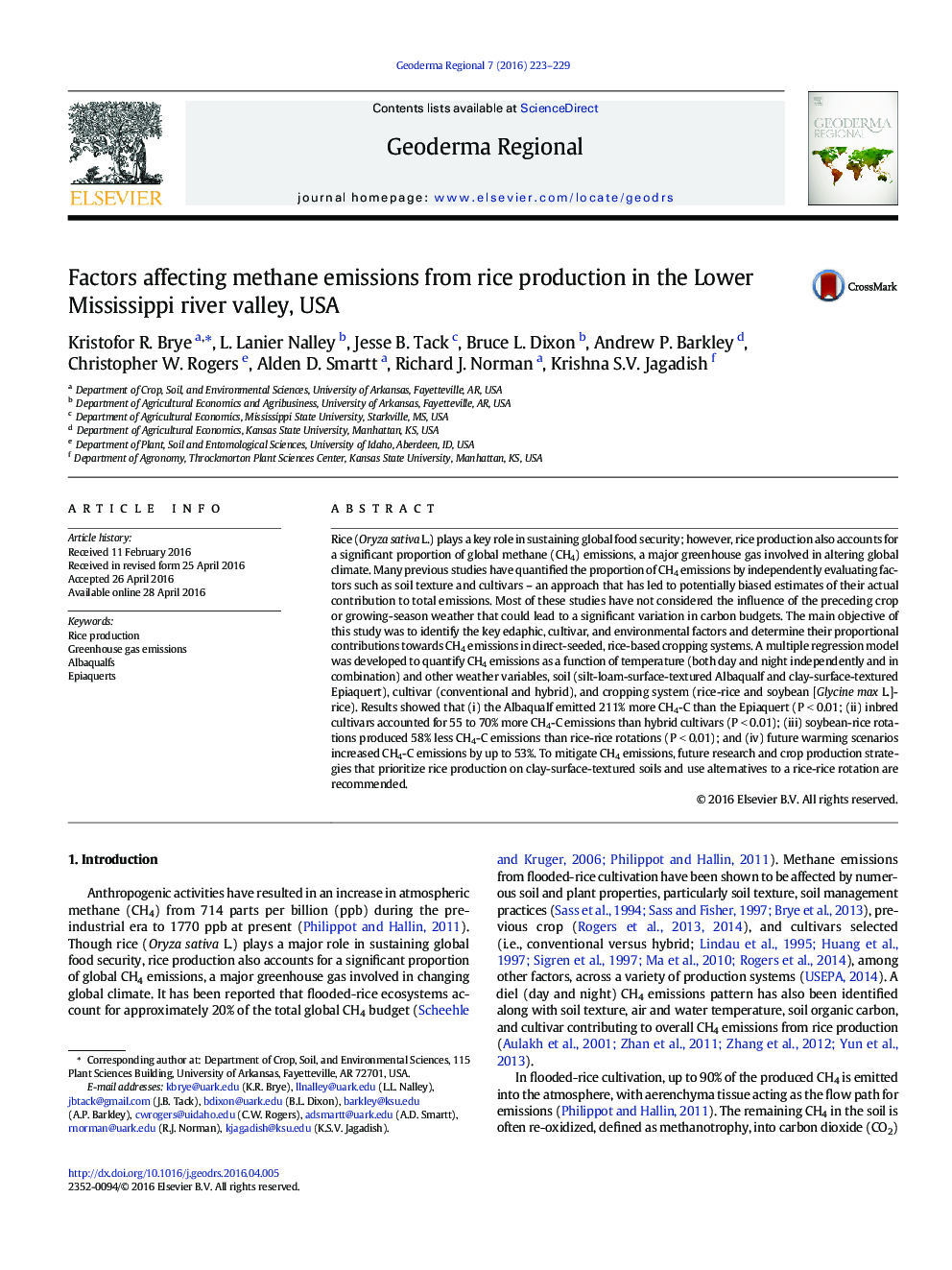| کد مقاله | کد نشریه | سال انتشار | مقاله انگلیسی | نسخه تمام متن |
|---|---|---|---|---|
| 4480774 | 1316744 | 2016 | 7 صفحه PDF | دانلود رایگان |
• A systematic and unbiased approach to modeling methane emissions from rice
• Evaluation of the effects of cropping patterns, rice cultivars, soil texture, and weather
• Estimating proportional contributions of key factors effecting methane emissions
• Incorporating location-specific day and night temperature thresholds
Rice (Oryza sativa L.) plays a key role in sustaining global food security; however, rice production also accounts for a significant proportion of global methane (CH4) emissions, a major greenhouse gas involved in altering global climate. Many previous studies have quantified the proportion of CH4 emissions by independently evaluating factors such as soil texture and cultivars – an approach that has led to potentially biased estimates of their actual contribution to total emissions. Most of these studies have not considered the influence of the preceding crop or growing-season weather that could lead to a significant variation in carbon budgets. The main objective of this study was to identify the key edaphic, cultivar, and environmental factors and determine their proportional contributions towards CH4 emissions in direct-seeded, rice-based cropping systems. A multiple regression model was developed to quantify CH4 emissions as a function of temperature (both day and night independently and in combination) and other weather variables, soil (silt-loam-surface-textured Albaqualf and clay-surface-textured Epiaquert), cultivar (conventional and hybrid), and cropping system (rice-rice and soybean [Glycine max L.]-rice). Results showed that (i) the Albaqualf emitted 211% more CH4-C than the Epiaquert (P < 0.01; (ii) inbred cultivars accounted for 55 to 70% more CH4-C emissions than hybrid cultivars (P < 0.01); (iii) soybean-rice rotations produced 58% less CH4-C emissions than rice-rice rotations (P < 0.01); and (iv) future warming scenarios increased CH4-C emissions by up to 53%. To mitigate CH4 emissions, future research and crop production strategies that prioritize rice production on clay-surface-textured soils and use alternatives to a rice-rice rotation are recommended.
Journal: Geoderma Regional - Volume 7, Issue 2, June 2016, Pages 223–229
